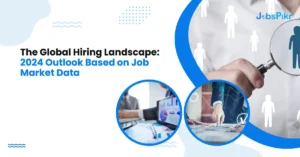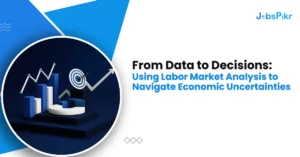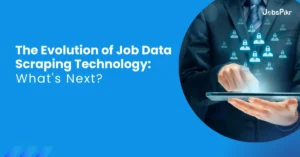The recruitment industry is undergoing a massive change as we type this. It is one of the few departments in an organisation that is being automated at almost every level. Ten years from now, people will refuse to believe that there was a time when we screened resumes manually. Scouring through thousands of resumes every day and categorising and tagging them based on experience, skills, and education is extremely time consuming. And there are really high chances of you missing out on a good prospect. Here, we will look at resume parsing using machine learning.
We have climbed the evolution ladder high enough to now automate this entire process to make it cost and time effective and absolutely error free. Plus, humans are now free to explore the more humane part of human resources. It is a win-win!
How Can Resume Parsing Using Machine Learning Help
Resume parsers draw insights from a resume, extract the important bits of information and then collate all of it under certain tags in a database for further inspection. Resume parsing is the first layer of filtering. Once this process is done and a database is populated and streamlined with predefined tags, all a recruiter has to do is search the base with certain keywords to get the list of relevant candidates.
What are The Challenges in Resume Parsing
Everybody wants to stand out. There is no standard template for a CV. To teach a machine ego two pick up on the nuance and categorise them correctly, eventually becomes an uphill task. The task of mining data for every different format is way more challenging for a computer than a human. Hence, the need for varied kinds of resume parsing services are required for different needs.
- Keyword-based resume parser: This applies simple heuristic algorithms to parse certain keywords, phrases and patterns in the text.
- Grammar-based resume parser: This option is far more comprehensive. It applies a number of pre-determined grammatical rules which breaks down the text in each CV to put it into context and condense it. Each sentence is considered as opposed to just phrases.
- Statistical parsers: This option is the most advanced technique of resume parsing using machine learning. It applies statistical models to text to identify and cull out structures in CVs. Each word means something different in different settings. This technique picks that up accurately and gives the most mirrored and correct analysis of each CV that is floated by in your organisation.
Despite all the advancement here, the data we have on accuracy is absolutely shocking and counterintuitive at first glance. Resume parsers using any of the aforementioned technologies provide close to only 60% accurate results. Shocking? Not quite!
Humans have clearly outwitted the machine. There are multiple ways of writing a date. There are some people who only go by their first and middle name. To pick out each words in context of multiple possible scenarios, is a task. A rule based parser will always have to be updated. This will then be counter productive.
Is Resume Parsing Using Machine Learning a Viable Solution?
The main drawback of rule-based resume parsing using machine learning lies in two essential components: a) text extraction, and b) information extraction. We need a robust system that combines and solves for the two together for the highest level of accuracy. Let’s look at how job matching algorithm works.
What are the Two Big Problems That ML-Based Resume Parsing can Help Resolve?
a) Text Extraction
Even a slight change in the formatting and templates can be detected by a machine. If a rule based algorithm hasn’t accounted for this change, then the parsing will be highly inaccurate. No two CVs look alike. Even two seemingly indistinguishable templates will be processed differently by the parser. Therefore, the need for a sophisticated algorithm becomes all the more important.
Just a basic difference in how Americans write dates versus how Europeans write dates, can throw a parser off.
b) Information Extraction
Any resume is essentially a cohesive document of different strings of information. This includes educational background, soft skills, work experience, achievements, certificates and some essential personal details. Some CVs have all these details, some have more and have just what they consider essential. Plus, it maybe be presented in a different way and be given different hierarchal importance. The same designation also has different weightage in different organisations.
To elucidate how words can take entirely different meanings and precedence, consider the following two statements:
‘Current job includes working as a development ops head at Apple,
versus
‘Worked on a project for Apple’
In the first statement, “Apple” should be tagged as the legitimate current company of the candidate as the statement is about working in that very organization in some capacity. But in the latter, “Apple” should not be interpreted with that much weightage. Same word, similar context, but entirely different story.
Why We Need an ML-based Resume Parsing to Combat the Aforementioned
1) Processes all kinds of file formats: Any ML-based resume parser has the ability to process almost all popular file types: PDF, DOC, DOCX, ZIP. Hence, the text extraction from any format submitted by the applicant is accurate.
2) Can break down complex CVs: An ML-based resume parser recognizes and extracts information from whichever format a candidate uses to arrange data: tables, graphs, pie charts, so on and so forth.
3) Machine learning keeps teaching itself and gets better with each resume parsed: Machine Learning by definition uses Optical Character Recognition (OCR) and Deep Learning NLP codes to understand the latest trends in CVs. It therefore keeps refining its extractions skills to keep up to extract texts from all the latest fads.
4) Super processing power: The ML-enabled resume parser takes literally less than three seconds to parse a single resume no matter how complex it might be.
5) Resume Quality Index: Where there is NLP, there are quality indices. Each CV is indexed based on its ‘capabilities’. This is done by allotting it an AI-backed score which is predefined and then keeps learning and improving on its own. The resumes get indexed regardless of the job profile to maintain absolute objectivity in pedigree.
After decades of research and development in the field of Artificial Intelligence, Machine Learning, and Natural Language Processing, we have finally managed to push the HR industry by the successful integration of Deep Learning with resume parsing using machine learning.
Deep Learning are AI codes that find recurring patterns in texts using neural networks. This has already revolutionised thousands of fields including the automobile sector with self driving cars. And it is now here to take the domain of Human Resources by storm. It is now on businesses to decide which side they want to be on: against the currents or with it.




